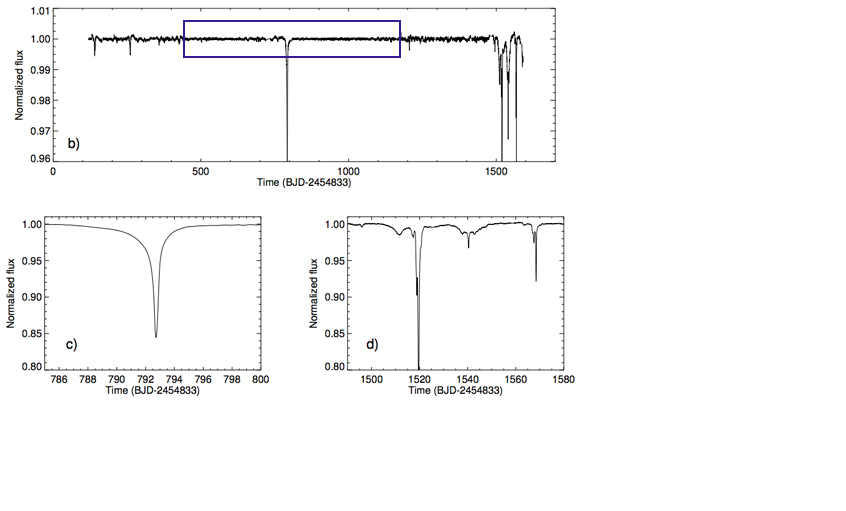I don't know the answer to the question but I do know what one hand clapping sounds like.
Really, as I've written it before, we need more data.
The only real way to get more data is to be in the same system with KIC 8462.
Wouldn't two gas giants colliding cause enough friction to be present to cause the gas to ignite?
The theory is interesting to say the least.
If two gas giants did collide and had planetary rings then the result could have been that fragments of the cores of both planets shattered yet still retaining some of the gas in orbit around the core orbited KIC 8462. Perhaps the 15% dim was caused by a smaller fragment of a gas core with gas causing the dim. The 22% dim could have been caused by a much larger fragment of the gas giant core with gas orbiting KIC 8462.
The smaller dims could suggest smaller pieces of the cores or ring networks maintaining their own orbit around the larger fragments or even possibly maintaining their own orbit around KIC 8462. Some of the data suggests that dual orbits of more than one object are present orbiting KIC 8462.
With a planetary collision between two gas giants the debris would be everywhere in the KIC system. But in order for two gas giants to collide and outside force such as a larger sun than KIC 8462 would need to be present to cause the two planets to collide. The only other force in space would be a powerful gravitational wave that might be able to knock the planets out of a regular orbit and into an irregular orbit causing the planets to collide.
I am certain Jason Wright and Tabetha Boyajian will be interested in this idea.


